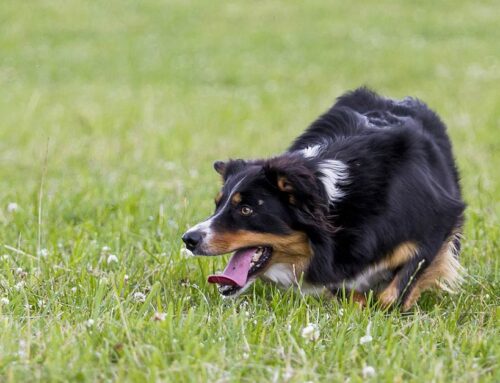I should start this post with a disclaimer that I am not advocating against the use of the pieces equipment I am going to mention, rather that we should take a good long look at how and why we are using them.
Routinely a post will make the rounds of the social media circuit about a dog who while playing with a dog, ended up getting tangled, one way or another, in the other dog’s collar. I was once part of an assessment of a dog whose playmate had died from strangulation from a collar entanglement. The dog being assessed had unintentionally killed his friend. Few would suggest that dogs should never wear collars, they are peerless for identification should a dog go astray. Micro chips and tattoos are helpful as well and good back-up should a collar go missing, but a tag with a contact number can get a dog home pretty darn fast.
At the risk of sounding like a whiny old person, longing for the good ol’ days I will say that when I was growing up with dogs we didn’t use crates. I am not saying that crates are not useful pieces of equipment or that we wouldn’t have been better off had we used a crate with my childhood dogs. I’m merely saying that for the majority of time dogs have co-housed with humans, they were not confined to a space which restricted their movement to the degree a crate does. And yes, one could add that there are far less humane ways to restrain dogs and that there are working dogs, who when not working, are similarly confined.
Crates are invaluable for a variety of reasons, no question. Plenty of dogs love climbing into their crate for a snooze or chew session. But crates have provided humans with the option of confining dogs, possibly for longer than is reasonable or humane. A dog who might be able to go for 6 hours without a toilet break, or before boredom sends them round the bend, can be left in a crate for 8 hours without giving owners any reason to attend to the dog sooner, because the dog was unable to cause any damage to the household. The equipment gets us what we need, at the dog’s expense. If a dog in a crate begins barking incessantly, there are more pieces of equipment we can use to deal with that, namely some kind of bark collar.
Muzzles and head halters, useful for the management of dogs, give us the opportunity to put dogs into situations where they might prove to be dangerous or annoying. They make it possible for us to ignore the information a dog is sharing with us through the intensity or duration of their behavior. Essentially they allow us to flood a dog with stimuli that they might otherwise have chosen to avoid, or bite. A skilled handler can incorporate these tools into their practice with dogs for the purpose of maintaining the safety of all involved, and in the case of head halters, to get a behavior which they then reinforce. And for a pet owner or novice handler the use of a piece of equipment which takes the element of choice away from a dog, may always be necessary. It’s not always the end of the world for a dog.
Recently I watched a service dog at an all day event being manipulated by a head halter. Not only did I assume that the dog had been professionally trained (the handler was a trainer) but that he was a well-loved animal. The dog was expected to ignore everything in his environment and focus on his handler. Should he turn his head to take note of a person or other dog walking into the room his head was pulled back toward the handler. That this was done with an apology, “sorry you’re still working,” mattered little to me, and probably less to the dog. This dog was not a service dog, he was a slave, albeit a well-cared for one. That’s just my opinion of course, and heaven knows I’ve got plenty of those.





